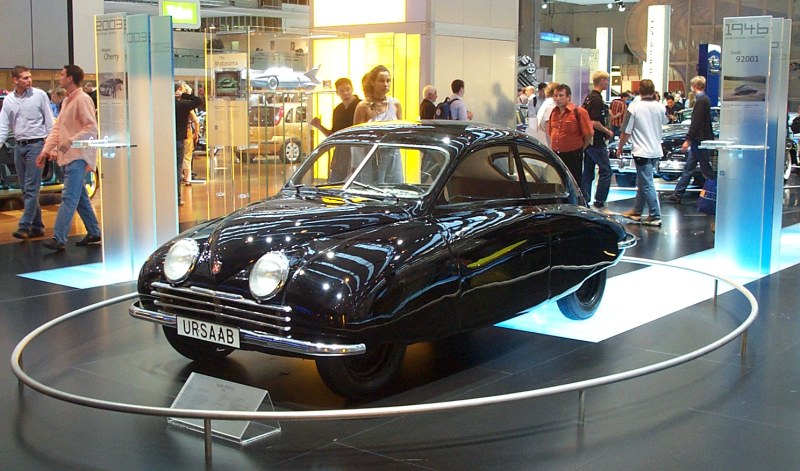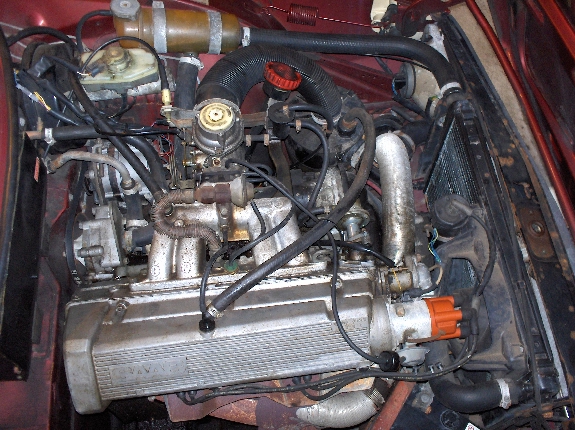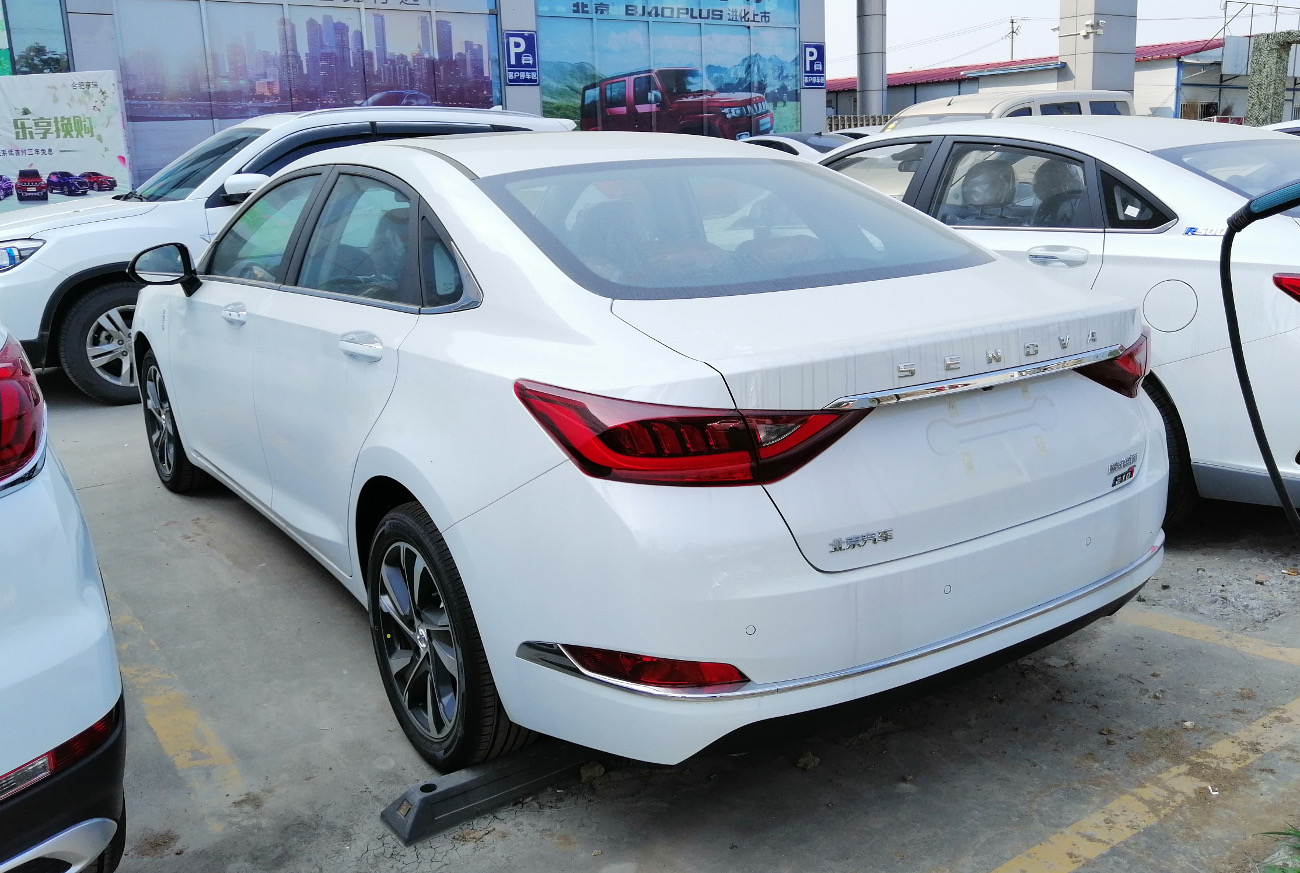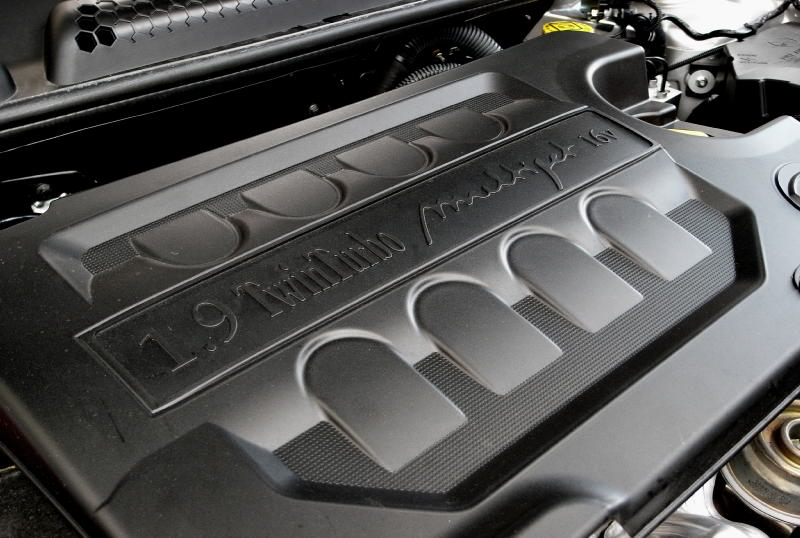|
Saab 9-5
The Saab 9-5 is an executive car, manufactured and marketed by Saab from 1997 to 2012, across two generations. The first generation 9-5 was introduced in 1997 for the 1998 model year, as the replacement of the Saab 9000. At the time, the car represented a significant development for the manufacturer. In the United States, the 9-5 was introduced in the spring of 1998, for the 1999 model year. The second generation was presented at the Frankfurt Motor Show on September 15, 2009 and production began in March 2010. It was the first Saab automobile launched under Spyker Cars' ownership, though developed almost entirely under GM's ownership. Production ceased in 2012 amid the Saab's liquidation. Overview Saab badged the model as the Saab 95, but consistently advertised it as the Saab 9-5, pronounced "nine five" rather than "ninety-five". This model should not be confused with the Saab 95, manufactured from 1959 to 1978. The first generation 9-5 was available with sedan and sta ... [...More Info...] [...Related Items...] OR: [Wikipedia] [Google] [Baidu] |
Saab Automobile
Saab Automobile AB () was a automotive industry, car manufacturer that was founded in Sweden in 1945 when its parent company, Saab AB, began a project to design a small automobile. The first production model, the Saab 92, was launched in 1949. In 1968, the parent company merged with Scania-Vabis, and ten years later the Saab 900 was launched, in time becoming Saab's best-selling model. In the mid-1980s, the new Saab 9000 model also appeared. In 1989, the automobile division of Saab-Scania was restructured into an independent company, Saab Automobile AB. The American manufacturer General Motors (GM) took 50 percent ownership. Two well-known models to come out of this period were the Saab 9-3 and the Saab 9-5. Then, in 2000, GM exercised its option to acquire the remaining 50 percent. In 2010, GM sold Saab Automobile AB to the Dutch automobile manufacturer Spyker Cars N.V. After many years establishing a sound engineering reputation and ultimately a luxury car, luxury price tag, ... [...More Info...] [...Related Items...] OR: [Wikipedia] [Google] [Baidu] |
Saab H Engine
The Saab H engine is a redesign of the Saab B engine, which in turn was based on the Triumph Slant-4 engine. Despite the name it is not an H engine or horizontally opposed engine, but a slanted inline-4. The H engine was introduced in 1981 in the Saab 900 and was also used in the Saab 99 from 1982 onwards. H stood for high compression; higher compression was part of the update from B to H engine. It continued in use in the 900/ 9-3, 9000, and 9-5. The 2003 GM Epsilon-based 9-3 switched to the GM Ecotec engine, leaving the 9-5 as the sole user of the H engine. The H family of engine was used in the first-generation 9-5 until it was discontinued in 2010. The tooling and know-how was sold to BAIC. The latter B2X4 and B2X5 engines have in practice nothing in common with the early B engines except cylinder spacing. All versions feature a grey cast iron block and an aluminum head with a single or double overhead chain driven camshafts. SOHC engines use two valves per cylinder and D ... [...More Info...] [...Related Items...] OR: [Wikipedia] [Google] [Baidu] |
Opel Vectra
The Opel Vectra is a mid-size car (large family car) that was engineered and produced by the German automaker Opel from 1988 until 2010. Available in Sedan (automobile), saloon, hatchback and Station wagon, estate (from model year 1997 onwards) body styles, the Vectra was also sold by the Vauxhall Motors, Vauxhall marque in the United Kingdom as the Vauxhall Cavalier from 1988 to 1995 and then as the Vauxhall Vectra from 1995 to 2008, and it was also sold by Holden in Australia as the Holden Vectra, by Chevrolet in Latin America as the Chevrolet Vectra. The Vectra was introduced in October 1988 as a replacement for the Opel Ascona, and was itself replaced in November 2008 by the new Opel Insignia, the nameplate spanning three generations and almost twenty-one years. Vectra A (1988–1995) The first generation Vectra, known as the Vectra A, was introduced in October 1988 for the 1989 model year, as a four-door notchback sedan (car), saloon, replacing the Opel Ascona C. A ... [...More Info...] [...Related Items...] OR: [Wikipedia] [Google] [Baidu] |
Senova D Series
The Beijing U7 or previously the Senova D70 is a mid-size sedan produced by BAIC under the Senova sub-brand and later the Beijing sub-brand respectively. The model range was originally the Beijing Auto Shenbao D-Series, and renamed to Senova D70 after the launch of the Senova brand. The second generation model added an additional Chinese name, Zhidao, at launch, and was later renamed to Beijing U7 after the launch of the revamped Beijing brand. First Generation (2013–2017) The Senova D70 was formerly known as the Beijing Auto Shenbao D-Series which came in two trim levels, the Shenbao D280 and the Shenbao D320. It was previewed by the Beijing Auto C70G prototype. The Shenbao D-Series was based on the Saab 9-5 and it debuted on the 2013 Shanghai Auto Show and was launched on the Chinese car market on May 11, 2013. Pricing ranges from 165,800 yuan to 235,800 yuan. The Beijing Auto Senova D-Series was renamed to Beijing Auto Senova D70 in 2014, bringing the name in line with th ... [...More Info...] [...Related Items...] OR: [Wikipedia] [Google] [Baidu] |
GM2900 Platform
GM or Gm may refer to: Companies * General Motors, US automobile manufacturing company which was founded in 1908 ** Motors Liquidation Company, the US automobile manufacturing company known as General Motors Corporation from 1916 to 2009 * General Mills, US food manufacturing company * Gunn & Moore, UK sports equipment company Places * The Gambia, by ISO 3166 code * Germany, by FIPS 10-4 country code * Greater Manchester, England Sports and gaming * RGM-79 GM, a mobile suit series in the video game ''Mobile Suit Gundam'' * Gamemaster or game master, a person officiating in a multiplayer role-playing game * Grandmaster (chess) * Grandmaster (martial arts) * ''GM'' (magazine) Science and measurement * Geiger–Müller tube or G-M tube, a type of radiation detector * Genetic modification or genetically modified, manipulation of an organism's genome * Gigametre or gigameter (Gm), one billion metres * Silty gravel, in the Unified Soil Classification System * Standard gra ... [...More Info...] [...Related Items...] OR: [Wikipedia] [Google] [Baidu] |
DMAX V6 Engine
DMAX may refer to: * Dmax, Maximum point dose to an organ or tumor target in radiotherapy cancer treatment. * In densitometry of optics and imaging "D-max" refers to maximum ''optical density'': The greatest achievable opaqueness or optical absorbency. D-min (Minimum density) is the corresponding expression of the lowest achievable density. * Isuzu D-Max, a pickup truck produced by Isuzu * DMAX (engines), of Moraine, Ohio, a joint venture between General Motors and Isuzu Motors, a manufacturer of Diesel engines for trucks * DMAX (TV channel), a German TV channel focused on men, owned by Warner Bros. Discovery International ** DMAX (British TV channel), a British TV channel owned by Warner Bros. Discovery International ** DMAX (Italian TV channel), an Italian TV channel owned by Warner Bros. Discovery International ** DMAX (Spanish TV channel) DMAX is a Spanish free-to-air television channel run by Warner Bros. Discovery. History At the end of 2011, the launch of DMAX, a sp ... [...More Info...] [...Related Items...] OR: [Wikipedia] [Google] [Baidu] |
Isuzu
, commonly known as Isuzu (, ), is a Japanese multinational automobile manufacturer headquartered in Yokohama, Kanagawa Prefecture. Its principal activity is the production, marketing and sale of Isuzu commercial vehicles and diesel engines. The company also has a number of subsidiaries and joint ventures, including UD Trucks, Anadolu Isuzu (a Turkish joint venture with Anadolu Group), Sollers-Isuzu (a Russian joint venture with Sollers JSC - Production stopped in March 2022, Isuzu stake transferred to Sollers in July 2023), SML Isuzu (an Indian venture formerly known as Swaraj Mazda), Jiangxi Isuzu Motors (a Chinese joint venture with Jiangling Motors Company Group), Isuzu Astra Motor Indonesia, Isuzu Malaysia ( Isuzu HICOM), Industries Mécaniques Maghrébines, Isuzu Truck (UK), Isuzu South Africa, Isuzu Philippines, Taiwan Isuzu Motors, Isuzu Vietnam, Isuzu Motors India and BYD Isuzu. Isuzu has assembly and manufacturing plants in Fujisawa, which have ... [...More Info...] [...Related Items...] OR: [Wikipedia] [Google] [Baidu] |
GM Ecotec Diesel (1997)
GM referred to many of its diesel engines as Ecotec including the GM Medium Diesel engine (2013 onwards) and the Isuzu-derived Circle L engine. This page describes the SOHC 16 valve turbocharged engines which GM introduced in 1997. and which were used extensively in its European models. The engines used a single chain-driven camshaft A camshaft is a shaft that contains a row of pointed cams in order to convert rotational motion to reciprocating motion. Camshafts are used in piston engines (to operate the intake and exhaust valves), mechanically controlled ignition syst ... and an aluminium cylinder head with a Bosch rotary high pressure injection pump. Variants The 2.0 engine was available in two different power outputs, badged by Vauxhall Di and DTi, the lower powered version retaining 16 valves and a turbocharger, but lacking the intercooler. The lower powered version was soon replaced by the smaller and unrelated 1.7 litre Circle L engine. The higher powered ... [...More Info...] [...Related Items...] OR: [Wikipedia] [Google] [Baidu] |
Turbodiesel
The term turbo-diesel, also written as turbodiesel and turbo diesel, refers to any diesel engine equipped with a turbocharger. As with other engine types, turbocharging a diesel engine can significantly increase its efficiency and power output, especially when used in combination with an intercooler. Turbocharging of diesel engines began in the 1920s with large marine and stationary engines. Trucks became available with turbo-diesel engines in the mid-1950s, followed by passenger cars in the late 1970s. Since the 1990s, the compression ratio of turbo-diesel engines has been dropping. Principle Diesel engines are typically well suited to turbocharging due to two factors: * A "lean" air–fuel ratio, caused when the turbocharger supplies excess air into the engine, is not a problem for diesel engines, because the torque control is dependent on the mass of fuel that is injected into the combustion chamber (i.e. air-fuel ratio), rather than the quantity of the air-fuel mixture. * ... [...More Info...] [...Related Items...] OR: [Wikipedia] [Google] [Baidu] |
Fiat JTD Engine
Multijet is a Fiat and General Motors joint venture, established in 1996, in manufacturing diesel engines with turbo and common rail direct injection technology. Most of the Fiat S.p.A., Fiat Professional, Groupe PSA (Peugeot and Citroën), Alfa Romeo, Maserati, Lancia, Chrysler, Chevrolet, Daewoo Motors, Cadillac, Karsan, Temsa, Iveco, Jeep, Opel, Vauxhall Motors, RAM Trucks, Mitsubishi Fuso, Maruti Suzuki, Suzuki, Tata Motors and Saab Automobile branded vehicles are equipped with Multijet engines. Ownership of some Fiat Multijet designs is shared with General Motors as part of a settlement of the failed merger between the two auto conglomerates. The GM Powertrain Torino group in Turin, Italy, manages its interest in these engines. Some PSA Peugeot Citroën diesel engines are also rebadged JTD units, and vice versa. Fiat's common-rail diesel engine is also known as JTD, an initialism of UniJet Turbo Diesel.autobild.deJTD - Lexikon - autobild.de accessdate: 19. June 2019 C ... [...More Info...] [...Related Items...] OR: [Wikipedia] [Google] [Baidu] |
Diesel Engine
The diesel engine, named after the German engineer Rudolf Diesel, is an internal combustion engine in which Combustion, ignition of diesel fuel is caused by the elevated temperature of the air in the cylinder due to Mechanics, mechanical Compression (physics), compression; thus, the diesel engine is called a compression-ignition engine (CI engine). This contrasts with engines using spark plug-ignition of the air-fuel mixture, such as a petrol engine (gasoline engine) or a gas engine (using a gaseous fuel like natural gas or liquefied petroleum gas). Introduction Diesel engines work by compressing only air, or air combined with residual combustion gases from the exhaust (known as exhaust gas recirculation, "EGR"). Air is inducted into the chamber during the intake stroke, and compressed during the compression stroke. This increases air temperature inside the Cylinder (engine), cylinder so that atomised diesel fuel injected into the combustion chamber ignites. The torque a dies ... [...More Info...] [...Related Items...] OR: [Wikipedia] [Google] [Baidu] |
V6 Engine
A V6 engine is a six- cylinder piston engine where the cylinders and cylinder blocks share a common crankshaft and are arranged in a V configuration. The first V6 engines were designed and produced independently by Marmon Motor Car Company, Deutz Gasmotoren Fabrik and Delahaye. Engines built after World War II include the Lancia V6 engine in 1950 for the Lancia Aurelia, and the Buick V6 engine in 1962 for the Buick Special. The V6 layout has become the most common layout for six-cylinder automotive engines. Design Due to their short length, V6 engines are often used as the larger engine option for vehicles which are otherwise produced with inline-four engines, especially in transverse engine vehicles. A downside for luxury cars is that V6 engines produce more vibrations than straight-six engines. Some sports cars like the Porsche 911 use flat-six engines instead of V6 engines, due to their near perfect primary engine balance and lower centre of gravity (which ... [...More Info...] [...Related Items...] OR: [Wikipedia] [Google] [Baidu] |







